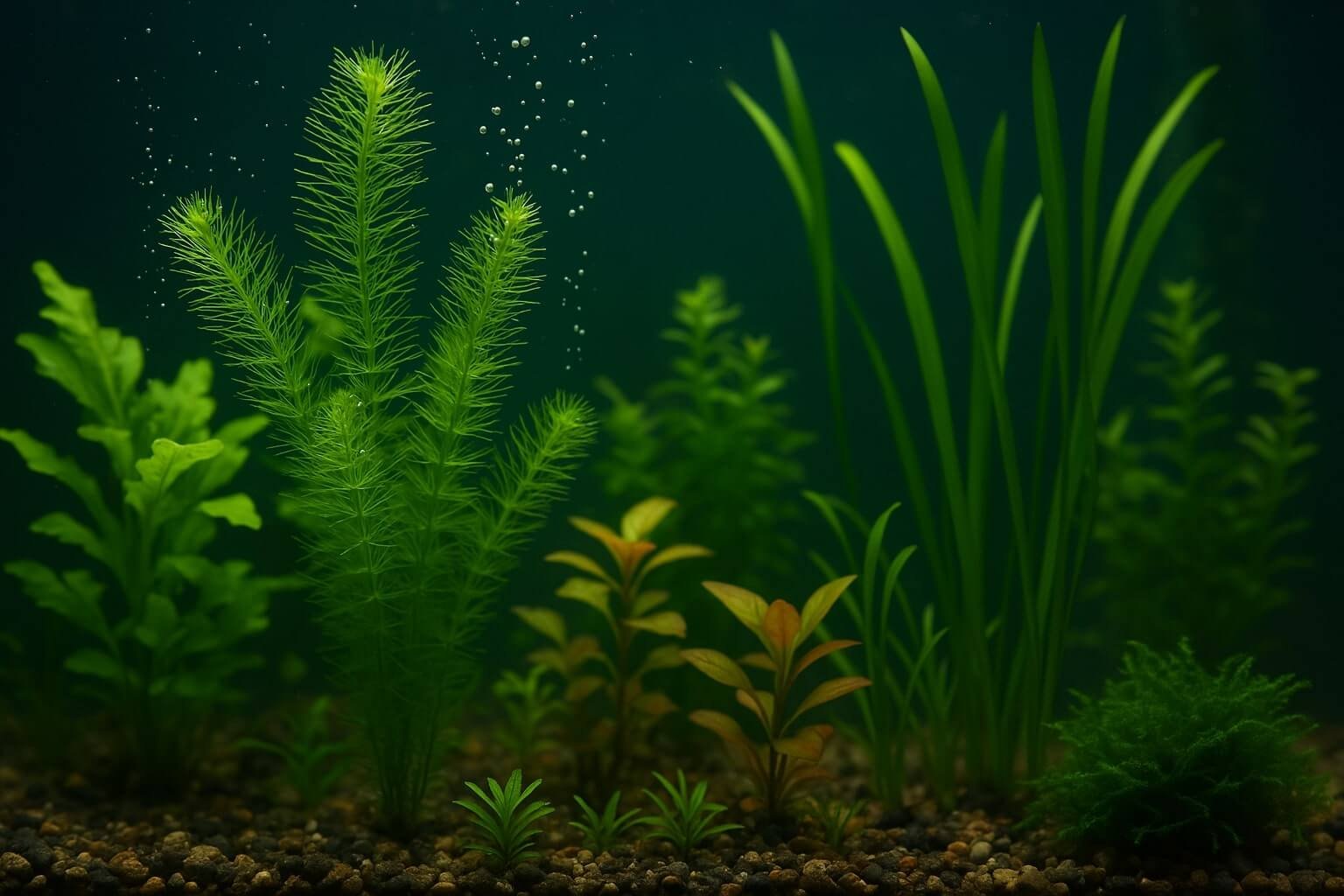A Complete Guide for Aquariums & Ponds
Maintaining a healthy aquatic environment goes beyond just clean water and beautiful fish. One of the most overlooked yet essential components is oxygenation — and the best way to achieve it naturally is by adding oxygenating aqua plants. These plants not only enhance the aesthetic appeal of your tank or pond but also play a vital role in maintaining water quality and supporting aquatic life.
In this guide, we’ll explore the top oxygenating aquatic plants, their benefits, care tips, and how to choose the right ones for your setup.
🌱 Why Oxygenating Plants Matter
Aquatic plants produce oxygen through photosynthesis, releasing it directly into the water. This oxygen is crucial for:
- 🐠 Fish respiration
- 🦐 Supporting beneficial bacteria
- 🌊 Preventing algae overgrowth
- 🧪 Maintaining water chemistry balance
Without adequate oxygen, aquatic life can suffer, leading to poor health or even fatalities. That’s why choosing the right plants is a game-changer.
🌿 Top 10 Best Aqua Plants for Oxygenating Water
Here’s a curated list of the most effective oxygenating plants for aquariums and ponds:
1. Hornwort (Ceratophyllum demersum)
- Type: Submerged
- Care Level: Easy
- Growth Rate: Fast
- Benefits: Releases high oxygen levels, absorbs excess nutrients, prevents algae
- Ideal For: Beginners, ponds, large tanks
2. Anacharis (Elodea densa)
- Type: Submerged
- Care Level: Easy
- Growth Rate: Fast
- Benefits: Produces oxygen, controls algae, provides shelter
- Ideal For: Cold water tanks, ponds
3. Eelgrass (Vallisneria)
- Type: Submerged
- Care Level: Moderate
- Growth Rate: Medium to fast
- Benefits: Natural filter, oxygenator, creates underwater meadows
- Ideal For: Tropical tanks, ponds
4. Green Cabomba (Cabomba caroliniana)
- Type: Submerged
- Care Level: Moderate
- Growth Rate: Fast
- Benefits: High oxygen output, aesthetic appeal
- Ideal For: High-light aquariums
5. Ludwigia Repens
- Type: Submerged
- Care Level: Easy
- Growth Rate: Fast
- Benefits: Oxygenation, vibrant red hues, nutrient absorption
- Ideal For: Aquascaping, tropical tanks
6. Water Wisteria (Hygrophila difformis)
- Type: Submerged
- Care Level: Easy
- Growth Rate: Fast
- Benefits: Oxygenation, nitrate absorption, decorative foliage
- Ideal For: Community tanks
7. Java Moss (Taxiphyllum barbieri)
- Type: Submerged
- Care Level: Very easy
- Growth Rate: Slow
- Benefits: Oxygenation, breeding ground, low maintenance
- Ideal For: Nano tanks, shrimp tanks
8. Dwarf Sagittaria (Sagittaria subulata)
- Type: Submerged
- Care Level: Easy
- Growth Rate: Moderate
- Benefits: Carpet effect, oxygenation, beginner-friendly
- Ideal For: Foreground planting
9. Rotala Indica
- Type: Submerged
- Care Level: Moderate
- Growth Rate: Fast
- Benefits: Oxygenation, vibrant coloration
- Ideal For: Aquascaping
10. Water Sprite (Ceratopteris thalictroides)
- Type: Floating/Submerged
- Care Level: Easy
- Growth Rate: Fast
- Benefits: Oxygenation, shade provider, nutrient absorber
- Ideal For: Surface coverage
🧪 How to Choose the Right Oxygenating Plant
When selecting plants, consider:
- Tank/Pond Size: Larger plants like Hornwort suit big setups.
- Water Temperature: Match plant tolerance to your climate.
- Lighting Conditions: Some plants need high light (e.g., Cabomba), others thrive in low light (e.g., Java Moss).
- Maintenance Level: Beginners should opt for easy-care plants like Anacharis or Water Wisteria.
🌊 Placement Tips for Maximum Oxygenation
- Submerged Plants: Place in the background or midground.
- Floating Plants: Let them drift freely or anchor them.
- Carpet Plants: Use in the foreground for aesthetic and oxygenation.
🌟 Bonus Tips for Healthy Aquatic Plants
- Use liquid fertilizers for nutrient support.
- Trim regularly to prevent overgrowth.
- Ensure proper water circulation to distribute oxygen evenly.
- Avoid overcrowding — balance is key.
❓ Frequently Asked Questions (FAQs)
Q1: What is the best oxygenating plant for beginners?
Anacharis and Hornwort are ideal for beginners due to their fast growth and low maintenance.
Q2: Can oxygenating plants replace air pumps?
In small tanks or ponds, yes — but for larger setups, they should complement mechanical aeration.
Q3: Do floating plants oxygenate water?
Yes, but submerged plants are more effective as they release oxygen directly into the water.
Q4: How many oxygenating plants should I add?
Aim for 30–40% plant coverage to maintain a balanced ecosystem.
Q5: Are these plants safe for all fish?
Most are safe, but always check compatibility with specific species (e.g., goldfish may uproot delicate plants).





